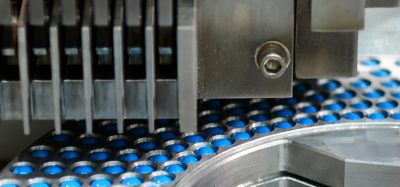World-class CDMO: process development and GMP production baculovirus expertise
Posted: 13 August 2017 | European Pharmaceutical Review | No comments yet
Scale-up and manufacturing strategy for insect cell culture (ICC) should be assessed at the earliest stages of process development. Your final goals will shape the process and determine at what stage to implement steps that can make the process more reliable and robust at manufacturing scale. Sharyn Farnsworth, Associate Principal Scientist at FUJIFILM Diosynth Biotechnologies, answers topical questions on a successful baculovirus programme.


Sharyn Farnsworth, FUJIFILM Diosynth Biotechnologies
FUJIFILM Diosynth Biotechnologies is a leading contract development and manufacturing (CDMO) organisation with the experience to guide you through these programmes. As a licensed manufacturer of a commercially approved baculovirus expressed product, FUJIFILM Diosynth biotechnologies brings over 15 years of hands-on baculovirus experience to your programme. We have a deep understanding of the challenges that will make a baculovirus programme successful, not only in development but all the way to cGMP production, including executing validation campaign(s), and supporting BLA and subsequent commercial production.
What kind of process do you develop in the insect cell culture space?
The process we develop is an ICC using Sf 21, Sf 9, and High-Five cell lines to produce recombinant proteins.
The Baculovirus Expression Vector System (BEVS) delivers a gene of interest into cells. More than 500 baculoviruses can infect and produce recombinant proteins in insect cells. This system can make very large molecules at high concentrations, for example, virus-like proteins (VLPs) for vaccines. It is also capable of certain post-translational modifications, but not to the extent that Chinese hamster ovary (CHO) cells can manage.
What challenges do you encounter during process development?
Although ICC is a relatively inexpensive system, difficulty with robust and reproducible statistical testing of both virus titers and protein titers can lead to significant process variation. This is even more exaggerated when viruses and/or virus stocks are unstable.
Can you discuss particular challenges in more detail and explain how you develop proper strategies?
Yes, for example, ICC growth is relatively standard, but thawing recovery can take more time than for mammalian cells (to reach consistent doubling times). Both minimum and maximum passage numbers need to be evaluated because they affect how infective the baculovirus will be. The results can help determine a cell-cycling strategy and how long a GMP cell bank will last. Another area that must be closely monitored is the harvest. Time to harvest is typically determined by the point at which protein production tapers off. Productivity begins to decline substantially after peak cell size. It is also influenced by whether production occurs through a primary or secondary infection. For scheduling consistency in GMP manufacturing, a time-based harvest is ultimately the best method.
Culture media is another area that you should monitor. At FUJIFILM Diosynth Biotechnologies we continually evaluate new media modifications as they become available from vendors. Nothing fully chemically defined has worked consistently for seed train and infection because the two processes have different nutrient needs. Currently available media typically include some type of Yeastolate to supply the needs of both cell growth and production post-infection. In some cases, supplementation at infection can increase productivity.
For ICC processes, do you use stainless steel or single-use bioreactors? What scales?
At FUJIFILM Diosynth we have processes in both stainless steel and single-use reactors, and have been able to run them interchangeably. For GMP manufacturing, we use 50L to 2,000L scale; for process development, we use 2L to 200L scales.
What are typical yields for ICC processes?
We are often asked about yield ranges. That depends on the protein. ICC yields are typically lower than for mammalian cell culture, and range from 20% to 70%.









